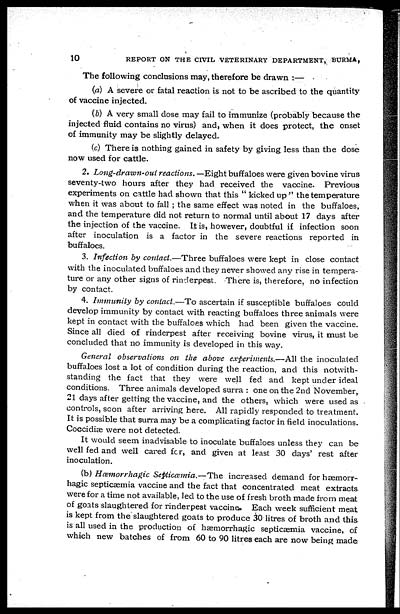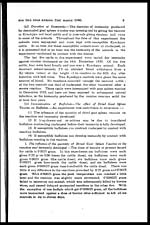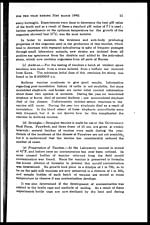Medicine - Veterinary > Civil Veterinary Departments > 1910-1941 - Annual report on the Civil Veterinary Department, Burma (including the Insein Veterinary School) > 1932-1941 > 1940
(451) Page 10
Download files
Individual page:
Thumbnail gallery: Grid view | List view

10 REPORT ON THE CIVIL VETERINARY DEPARTMENT, BURMA,
The following conclusions may, therefore be drawn :—
(a) A severe or fatal reaction is not to be ascribed to the quantity
of vaccine injected.
(b) A very small dose may fail to immunize (probably because the
injected fluid contains no virus) and, when it does protect, the onset
of immunity may be slightly delayed.
(c) There is nothing gained in safety by giving less than the dose
now used for cattle.
2. Long-drawn-out reactions. —Eight buffaloes were given bovine virus
seventy-two hours after they had received the vaccine. Previous
experiments on cattle had shown that this " kicked up" the temperature
when it was about to fall ; the same effect was noted in the buffaloes,
and the temperature did not return to normal until about 17 days after
the injection of the vaccine. It is, however, doubtful if infection soon
after inoculation is a factor in the severe reactions reported in
buffaloes.
3. Infection by contact.—Three buffaloes were kept in close contact
with the inoculated buffaloes and they never showed any rise in tempera-
ture or any other signs of rinderpest. There is, therefore, no infection
by contact.
4. Immunity by contact.—To ascertain if susceptible buffaloes could
develop immunity by contact with reacting buffaloes three animals were
kept in contact with the buffaloes which had been given the vaccine.
Since all died of rinderpest after receiving bovine virus, it must be
concluded that no immunity is developed in this way.
General observations on the above experiments.—All the inoculated
buffaloes lost a lot of condition during the reaction, and this notwith-
standing the fact that they were well fed and kept under ideal
conditions. Three animals developed surra : one on the 2nd November,
21 days after getting the vaccine, and the others, which were used as
controls, soon after arriving here. All rapidly responded to treatment.
It is possible that surra may be a complicating factor in field inoculations.
Coccidiæ were not detected.
It would seem inadvisable to inoculate buffaloes unless they can be
well fed and well cared for, and given at least 30 days' rest after
inoculation.
(b) Hæmorrhagic Septicæmia.—The increased demand for hæmorr-
hagic septicæmia vaccine and the fact that concentrated meat extracts
were for a time not available, led to the use of fresh broth made from meat
of goats slaughtered for rinderpest vaccine. Each week sufficient meat
is kept from the slaughtered goats to produce 30 litres of broth and this
is all used in the production of hæmorrhagic septicæmia vaccine, of
which new batches of from 60 to 90 litres each are now being made
Set display mode to: Large image | Zoom image | Transcription
Images and transcriptions on this page, including medium image downloads, may be used under the Creative Commons Attribution 4.0 International Licence unless otherwise stated. ![]()
| Permanent URL | https://digital.nls.uk/75803766 |
|---|




